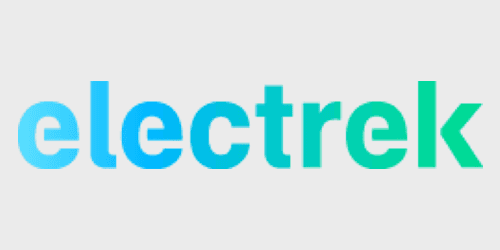Tesla Model S guide: The first full- production model
The Tesla Model S is an all-electric luxury sedan and the first vehicle developed from the ground up by Tesla. The Tesla Roadster was the first vehicle developed by Tesla, but it was based on a chassis by Lotus.

Table of contents
History of the first volume production Tesla
The Tesla Model S is an all-electric luxury sedan and the first vehicle developed from the ground up by Tesla. It was originally unveiled as a prototype in 2009.
The Model S sedan also sits as Tesla’s longest-running EV in production to date, making its official debut in 2012, three years after it debuted as a prototype. At the start of production, Tesla was completing 12-15 Model S EVs a week.
By 2015, that number had grown to over 1,000 per week, helping the Model S reach its reign as the best-selling plug-in electric vehicle in both 2015 and 2016.
The time of the launch of the Model S is when Tesla also began building out its Supercharger network, which now consists of over 16,000 locations globally.
Early owners of the Model S also qualified for free Unlimited Supercharging, a perk that is much harder to come by these days.
In recent years, sales of the veteran Model S have dwindled in comparison to Tesla’s more cost-friendly Model 3 and Model Y EVs, but it remains a premier sedan offering luxury and performance, especially following its latest refresh and upcoming Plaid powertrain.

Performance Specs
The Tesla Model S currently comes in two different AWD trims – a dual-motor Long Range and the tri-motor Plaid.
The newly refreshed Model S Long Range offers an EPA estimated range of 405 miles, can hit a top speed of 155 mph and can travel 0-60 mph in 3.1 seconds.
The previously available Performance trim of the Model S was dropped when the EV saw a refresh from Tesla in 2021. It has since been replaced by the highly anticipated Plaid tri-motor powertrain.
This version travels an EPA estimated 396 miles on a single charge and can hit a top speed of 200 mph. Additionally, the Plaid Model S can zoom from 0-60 in 1.99 seconds.
Most recently, the Model S Plaid has showcased its hot track times at the Nürburgring racetrack in Germany. In late August, the Plaid actually crashed into a barrier while attempting to break some track records. Luckily, the driver was ok.
A week later, we reported footage of the Model S Plaid once again tearing up the track at Nürburgring. In fact, the Plaid actually ended up setting a new electric lap record, with a time of 7:35.579.
Plaid+
In 2021, Tesla began touting an even faster version of the Plaid powertrain with the unveiling of the Plaid+. This trim was advertised to offer the same speed as its Plaid counterpart but with a 520+ mile range on a single charge.
Not long thereafter, however, Tesla scrapped the entire trim as its CEO declared that drivers don’t need more than 400 miles of range, and the regular Plaid is “just too good.”
Here’s a rundown of how everything transpired around the short rise and fall of the Plaid+:
- Elon Musk announces Tesla is canceling Model S Plaid+, don’t really need more than 400-mile range
- Tesla pushes update to improve new yoke steering wheel experience and more
- Watch Tesla Model S Plaid with Track Mode do hot laps on Nürburgring racetrack
- Tesla Model S Plaid laps Nürburgring in 7:35.579, production electric record
Other features
In addition, the Plaid tri-motor powertrain and nasty speed increase, the latest refresh on the Model S, brought updates to the interior.
This includes a second touchscreen for rear passengers, as well as a new yoke steering wheel. When Electrek first reported the yoke steering, we were seeing some early versions of the Model S with a regular round wheel.
However, Tesla CEO Elon Musk has since come out and stated that the yoke steering wheel is here to stay. At least on the Model S and Model X.
Last March, Elon Musk stated that the new Model S would come with a rear-facing, third-row seating option, but we have yet to see it.
Most recently, Tesla pushed a new software update to improve the Model S’ suspension, Autopark feature, and more. This was followed by an additional software update that enables Sirius XM radio and “immersive sound” in the new Model S.
How much does a Model S weigh?
This is a common question for prospective Tesla owners, especially those looking to maximize speed… or practice deadlifting their EV for workouts.
The current Long Range version of the Tesla Model S weighs 4,561 lbs., while the Plaid and its additional motor weigh in at 4,766.
The Model S remains the second heaviest Tesla behind the Model X — at least until the Cybertruck begins deliveries.

How much does a Tesla Model S cost?
This is an important question for anyone even briefly pondering purchasing a Tesla, especially the more luxury-end Model S. The final purchase price depends on a number of factors, including powertrain, customizations, and add-ons such as Full Self-Driving capabilities.
To give you the best range of pricing for a Model S, we have shared the lowest-priced, bare-bones model and gone upwards to the fully loaded version of either trim.
Note that all prices are relevant at the time of this posting and do not include any taxes, destination fees, or federal tax rebates.
The Long Range Model S is the lower-priced of the two versions currently available. This dual motor AWD trim starts at a purchase price of $89,990 and can go as high as 108,990 all in.
This higher price includes all available add-ons such as red paint, custom interior, and FSD capabilities. It also includes 21″ Arachnid Wheels, which bring the EV’s estimated range down to 375 miles.
The Plaid Model S begins at a purchase price of $129,990 with white exterior paint and zero upgrades. If you were to add every available feature listed above, the Plaid can go as high as $148,990.
Again it’s important to note that the Arachnid Wheels upgrade will not only cost $4,500 but will also lower the Plaid’s estimated range to 348 miles.
All in all, you can get yourself a newly refreshed Model S for $90,000 minimum and can go all in on a souped-up Plaid for $149K. Either way, you may have to wait a bit longer for delivery, especially on the Long Range Model S.
If that’s too much money, you may be able to find a cheaper Model S for sale near you.
Have Model S prices gone up?
They certainly have. While the Model S has always been one of the most expensive Tesla models in the current fleet, it has seen additional price hikes recently, beginning with the 2021 refresh.
Here are some previous articles to get you up to speed.
- Tesla increases Model S Plaid price by $10,000 just ahead of first deliveries
- Tesla increases Model S and Model X prices by $5,000
- Tesla increases Model S price by another $5,000

How long does it take to charge a Model S?
After the pricing question, another common one to follow is How long does it take to charge a Tesla? Just like the pricing, a number of factors contribute to how quickly you can get your Model S juiced back up.
First, it’s important that you clearly understand the EV charging standards and how they vary. Then, you’ll know the three levels of charging and what sort of times you can expect.
Charge times will most certainly vary based on these factors, but here’s a broad breakdown of charge speeds for a Model S.
- Level 1 AC (110-120V outlet at home): 20-40 hours
- AC Level 2 (220-240V – Third party chargers/Tesla chargers/Tesla home charger): 8-12 hours
- Level 3 DC fast charger (480+ volts – Third party chargers/Tesla Supercharger): 15-25 minutes
The Tesla Supercharger network is the best for speedy charging, especially on a road trip or for a quick recharge when you’re running super low.
However, due to their massive direct current (DC), Superchargers are not recommended for daily use.
Tesla recommends Level 2 charging at home if and whenever possible.
For more pertinent details regarding Tesla’s Supercharger network, check out our detailed guide.
What is the max Supercharging power available on the Model S?
Currently, either trim of the Tesla Model S can handle up to 250 kW of power on a DC fast charger.
However, Elon Musk has recently stated that Tesla plans to up the Supercharger network to 300 kW.
That may eventually require an upgrade to the Tesla’s themselves to handle such power, but that can likely be accomplished through an over-the-air (OTA) software update.
How much does it cost to charge a Tesla Model S?
Different question, same answer – it depends. In this case, pricing depends on a lot of factors. This includes what state you live in, whether you’re at home or on a public charger, what time of day it is, and how long you’re charging.
By using annual data of the average residential energy costs in the US from the Energy Information Administration (EIA), we have calculated an estimated cost to charge both at home and at a DC Fast Charger.
Cost to charge at home
To begin, we’ve calculated that the 100 kWh battery pack on the Model S will cost approximately $16.47 to charge at home on a Level 1 or Level 2 AC charger from 0-100%.
Since the charger must convert AC power into DC for the Tesla, we’ve also accounted for an 85% charging efficiency in that price. For more information on how to determine these prices and what the heck charging efficiency is, check out our Tesla charging guide.
It’s also important to note that while these prices are the cost to charge your Tesla battery from 0-100%, you should never let your battery get down to 0%. Furthermore, you should rarely charge your EV all the way to 100% unless you need maximum range for a long trip.
Speaking in terms of mileage, the Model S Long Range has an EPA estimated range of 405 miles, which means you’d pay about $0.041 per mile or $4.07 for 100 miles of range.
The Model S Plaid has an estimated range of 390 miles, coming out to $0.042 per mile or $4.22 per 100 miles.
Cost to charge on a Tesla Supercharger
Considering the 100 kWh battery pack on a public DCFC like a Tesla Supercharger, drivers can charge from 0-100% for approximately $22.95. This accounts for a 95% charging efficiency since less energy is lost on DC chargers compared to AC Level 1 and Level 2.
The Long Range Model S costs about $0.057 per mile and approximately $5.67 for 100 miles of range. At a lower estimated range, the Plaid version of the Model S can cost you about $0.059 per mile and $5.88 per 100 miles.
Model S FAQ
Close. The Model S is the first Tesla to reach volume production. The original Tesla is the Roadster, but only about 2,450 units of that EV were produced.
Great question. This past June, Elon Musk Tweeted that Plaid+ had been cancelled because the Model S Plaid “is just too good.” When asked to elaborate, Musk said that Tesla no longer believes drivers have any need for over 400 miles of range.
Totally. However, we recommend you doing your homework and research to see if a Tesla lease is better for you than buying. Used Tesla values have been soaring lately, so it’s worth at least weighing both options. Check out our Tesla lease guide for more.
Considering they’re both sedans, the Model 3 is the most similar Tesla, although the Model 3 is smaller and much much cheaper. Mechanically, the Model S shares more of its DNA with the Model X as they both sit upon Tesla’s 2nd generation platform.
Most versions of the Model S have previously received some offers of free unlimited supercharging at some point. However, Tesla has made no mention of free unlimited Supercharging for any models since 2020. Learn more here.













